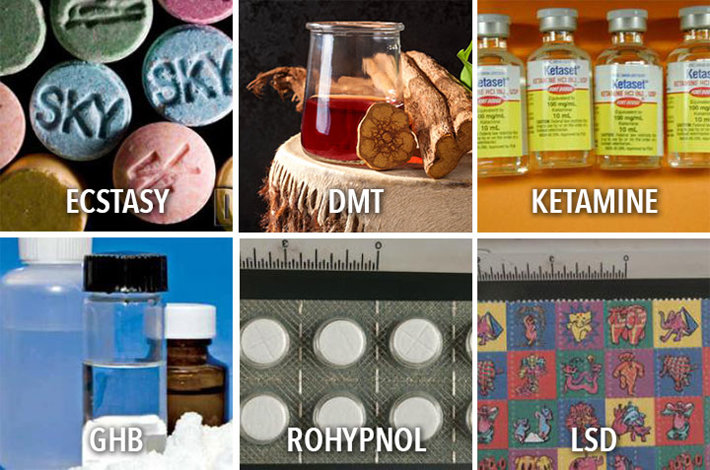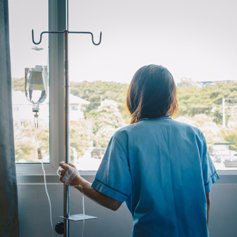Club Drugs Addiction Information

What are club drugs? Club drugs are a group of psychoactive substances that have a direct and powerful effect on the central nervous system. Club drugs can cause changes in mood, behavior, awareness, and sensory perception. Club drugs are titled as such because these substances are most often used by young adults at nightclubs, concerts, bars, and parties.
A few of the most commonly-used club drugs are:
- Ecstasy/Molly. Ecstasy and Molly are both names for MDMA, a potent, psychoactive synthetic drug that alters mood and perception, usually by inducing a rush of euphoria and enhanced affection for those around the user.
- DMT. Short for dimethyltryptamine, DMT is a hallucinogenic drug that is similar to LSD. DMT is a powerful chemical that can also occur naturally in some Amazonian plants.
- Ketamine. Ketamine is an anesthetic intended for use in veterinary clinics. However, when consumed in powder, pill, or injectable form, it can have a powerful, mind-altering, hallucinogenic effect.
- GHB (gamma hydroxybutyrate). Often called the “date rape drug,” GHB is a dangerous psychoactive substance. Consuming GHB can lead to poisonings, overdoses, sexual assaults, and even deaths. While the drug is sought for its sedating and euphoria-inducing effects, its case-by-case effects can be highly unpredictable and dangerous.
- Rohypnol. With similar effects to GHB and also used as a date rape drug, Rohypnol is a pharmaceutical depressant and benzodiazepine drug that is notapproved for medical use in the United States.
- LSD. Short for D-lysergic acid diethylamide, LSD is a potent, mind-altering drug. LSD is often used in party or club settings for its hallucinogenic effects.
What are the Consequences of Using Club Drugs?

Because of how severely club drugs alter the user’s mind and their perception of reality, the use of such medications can have widely unpredictable consequences. Furthermore, such consequences can be spread across all aspects of the user’s life, from his or her physical health to their financial condition, relationships, legal status, and mental state.
So what are some of the consequences of using club drugs?
- On the body… Drowsiness, blurred vision, nausea, vomiting, loss of muscle control, blacking out, dehydration, extreme heat exhaustion, dangerous changes in heart rate or blood pressure.
- On the mind… Aggressive behavior, hallucinations, fear, terror, paranoia, memory loss, or impaired judgment.
- On relationships… When a person becomes addicted to club drugs, they will prioritize those substances above and beyond one’s relationships with family members and loved ones. The result is that the drug comes first, and relationships come second. Marriages and families can be torn apart because of this.
- On one’s work life, financial, or economic situation… Using club drugs can cost hundreds of dollars per month. Furthermore, as people who use such substances often can’t get or keep a job as a result of their drug use, their financial condition quickly suffers.
- Legal consequences of club drug use… As club drugs are illegal, being caught with such substances often leads to arrest and jail time, reducing one’s odds for success and a happy life.
The Short-Term and Long-Term Effects of Using Club Drugs
In the short term, using club drugs has a wide range of harmful effects. It’s challenging to gauge the anticipated impact of such drugs because the hallucinations caused by them are entirely unpredictable. And while overdose deaths caused by club drugs are not common, it is possible to receive permanent damage as a result of taking such substances. For example, LSD has been known to cause “bad trips,” which means a highly involved hallucinogenic experience that one may never fully recover from.

In the long term, people who use club drugs may experience brain damage, specifically as pertains to the brain’s ability to regulate critical functions such as sleeping, learning, and emotional response. Other long-term effects include nerve damage, depression, anxiety, memory loss, psychosis, cardiovascular complications, convulsions, kidney failure, and even death.
Signs and Indicators – How to Tell if a Loved One is Using Club Drugs
While people who use drugs often take steps to conceal their use from others, there are several telltale signs of such use.
Here are some of the behavioral, physical, mental, and environmental signs of club drug use:
- Pacifiers
- Jaw clenching
- Increased heart rate
- Loss of appetite
- Rapid, sometimes incomprehensible speech
- Excessive energy
- Insomnia
- Extreme mood swings
- Aggressive behavior
- Dizziness
- Headaches
- Blurred vision
- Exhaustion
- Confusion
- Losing control of movement
- Tremors
- Nightmares
- Disheveled appearance
- Lack of regular hygiene habits
- Bizarre and erratic behavior
- Dancing with glow sticks
Using club drugs can lead to addiction and even death. If one finds out that a family member or friend is using club drugs, helping them find treatment at a rehab center has to be the top priority.
Sources:
- https://medlineplus.gov/clubdrugs.html
- https://www.drugabuse.gov/publications/drugfacts/mdma-ecstasymolly
- https://www.drugabuse.gov/publications/drugfacts/hallucinogens
- https://archives.drugabuse.gov/publications/nida-community-drug-alert-bulletin-club-drugs/gamma-hydroxybutyrate-ghb
- https://www.dea.gov/factsheets/rohypnol
- https://www.aafp.org/afp/2018/0715/p85-s1.html
